How To Install Ssl Certificate In Cpanel
After the certificate has been activated and issued to you by the Certificate Authority, you can proceed with deploying the certificate in your cPanel. Follow the steps below: Note: Some hosting providers do not have the option Manage SSL Sites in their cPanel (ex.: Hostgator, Godaddy, etc.). In this case it might be necessary to contact the hosting provider directly for performing the installation process or locating the exact installation guide for third-party certificates on their site. Note: The certificate code can be found in the *yourdomain*.crt file which is usually sent to you in the email from the Certificate Authority. Alternatively, it can be downloaded from your account directly. If you want to use this certificate for Mail Services (Exim and Dovecot), check the Enable SNI for Mail Services box. In this case, you will be able to use your domain on which the SSL certificate has been installed as a hostname of the mail server configuring your mail clients to work via secured ports. Congratulations! The certificate is now installed on the server for your site. The site should now be accessible via https://. You can check the installation using this tool After the certificate has been activated and issued to you by the Certificate Authority, you can proceed with deploying the certificate in your cPanel. Follow the steps below: Note: The certificate code can be found in the *yourdomain*.crt file which is usually sent to you in the email from the Certificate Authority. Alternatively, it can be downloaded from your account directly. If you want to use this certificate for Mail Services (Exim and Dovecot), check the "Enable SNI for Mail Services" box. In this case, you will be able to use your domain on which the SSL certificate has been installed as a hostname of the mail server configuring your mail clients to work via secured ports. Congratulations! The certificate is now installed on the server for your site. The site should now be accessible via https://. You can check the installation using this tool. NOTE! Starting from cPanel version 11.60 you are able to use the installed certificates to log into the cPanel/WHM as well as webmail, ftp and webdisk. The certificate installed for a domain gets assigned to these services automatically, no separate actions are required.Retro theme

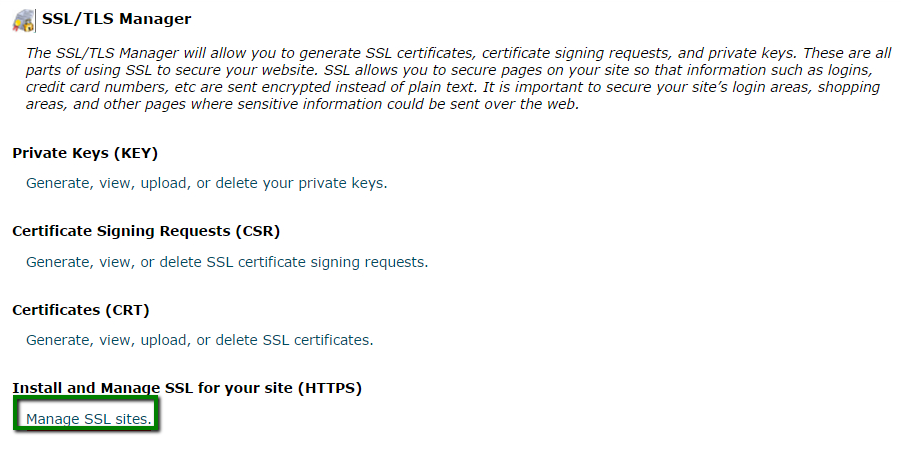
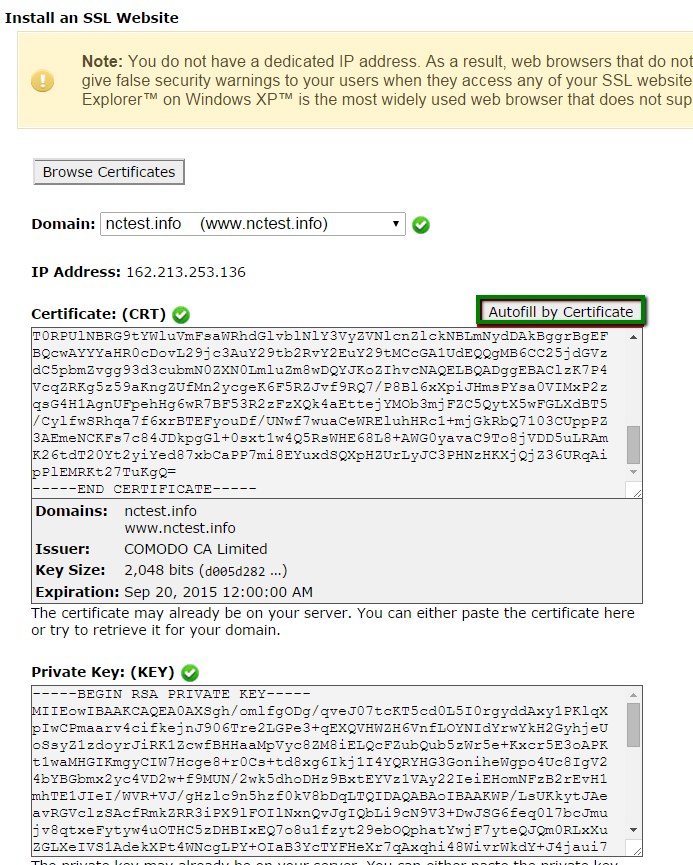
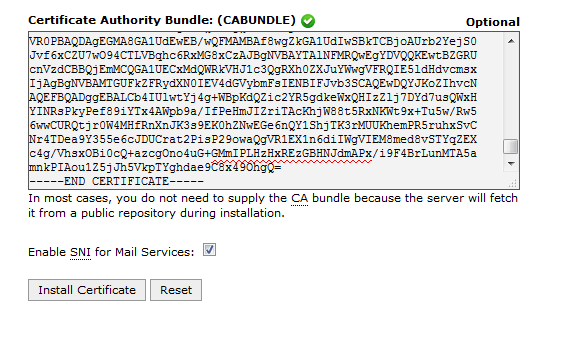
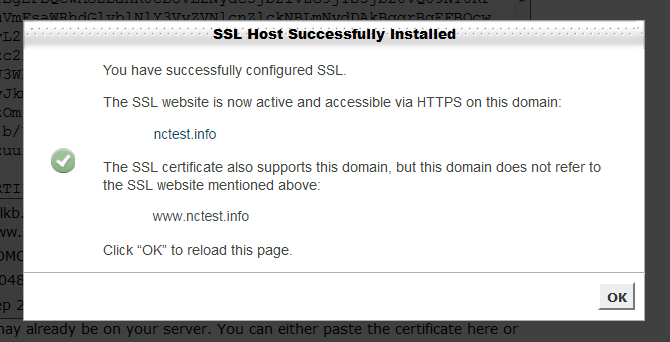
Basic theme

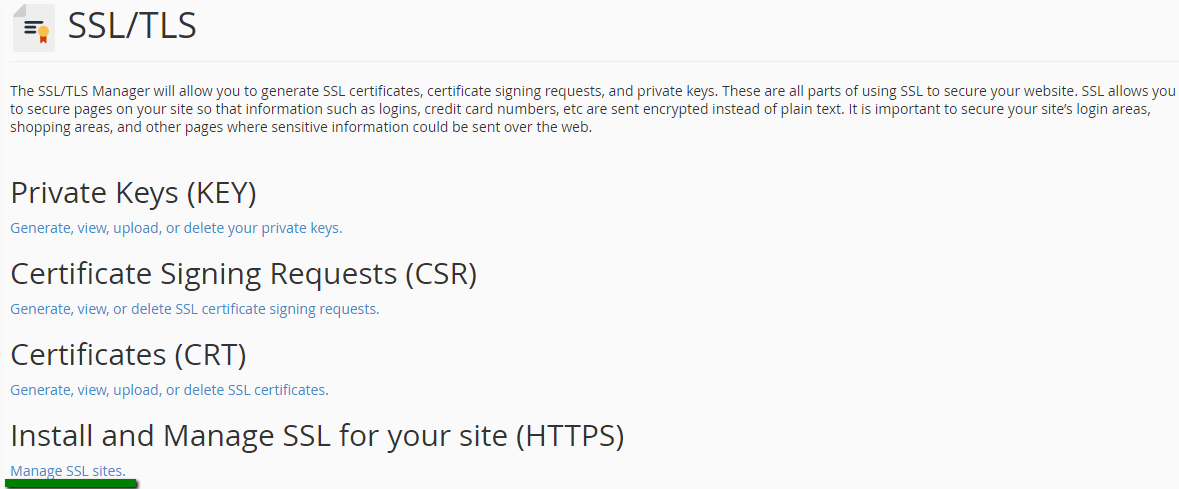
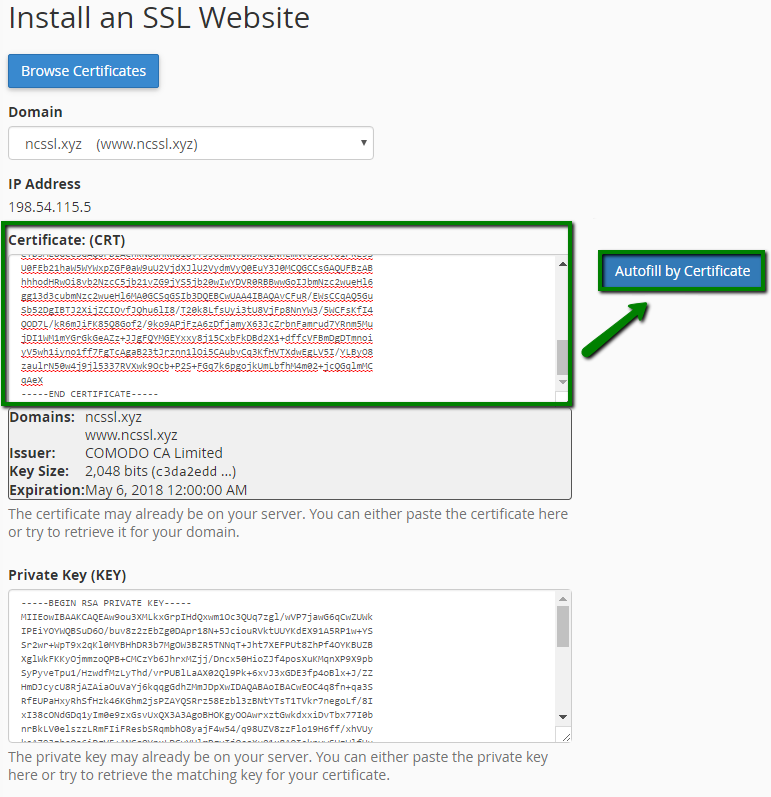
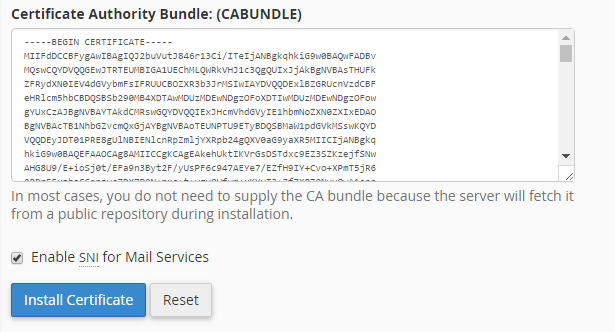
How To Install Ssl Certificate In Cpanel
Source: https://www.namecheap.com/support/knowledgebase/article.aspx/9418/33/installing-an-ssl-certificate-on-your-server-using-cpanel/
Posted by: dunawayselse1995.blogspot.com

0 Response to "How To Install Ssl Certificate In Cpanel"
Post a Comment